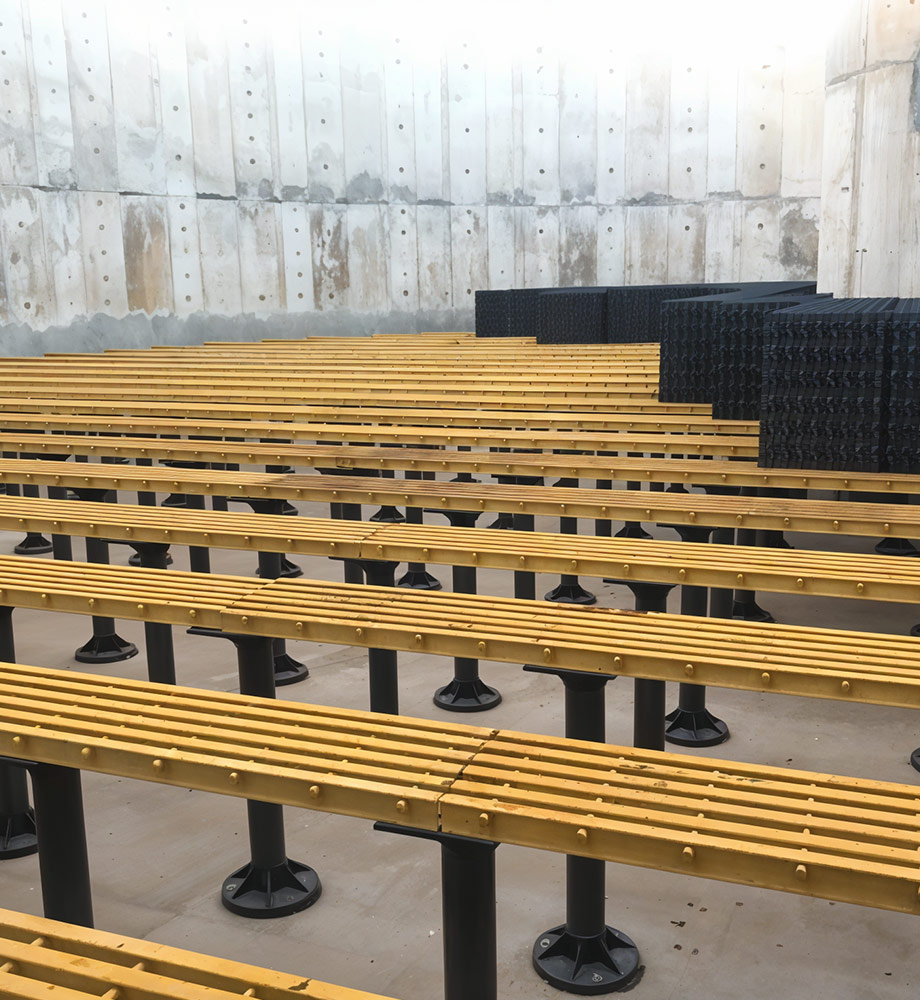Key Features
- Corrosion-Resistant FRP: Ideal for exposure to chlorinated or chemically pretreated water.
- High Load Capacity: Engineered lamination (even with embedded stiffeners) to support wet media without deflection.
- Precision Holes/Slots: Drilled or molded holes/slots sized for low headloss distribution.
- Lightweight Construction: Easier to handle than concrete or steel trays.
- Smooth Surface: Minimizes friction and prevents media compaction.
- Custom Fit: Fabricated to fit tank shape (circular, rectangular) and size exactly.
Benefits
- Long Service Life: No rusting or perforation from chemicals – lifespan far exceeds metal trays.
- Uniform Flow: Designed to ensure even water flow through the media bed, improving filter efficiency.
- Easy Maintenance: FRP can be cleaned with standard methods (pressure wash) and does not pit.
- Reduced Downtime: Fast replacement due to lightweight panels.
Applications
- Bottom support plates in pressure sand filters and multimedia filters.
- Upper support beds in clarifiers to hold back filter media or gravel.
- Rings or central supports in trickling filters or other gravity filters.
- Separators in contactor or ion-exchange tanks (media towers).
Technical Specifications
- Thickness: Typically 6–25 mm FRP panels with web stiffeners.
- Material: FRP with vinylester or epoxy resin (depending on chemicals).
- Perforation Area: Customized (e.g. 10–50% open area for flow).
- Load Rating: Designed per AWWA M27 or customer specs (often >500 kg/m²).
Unique Selling Points
- Engineered Strength: Up to 50% stronger than plain fiberglass sections.
- Corrosion Immunity: Unaffected by acids, alkalis or salt – ideal for harsh water.
- Light & Custom: Unlike rigid concrete, FRP supports can be built to any shape/size.
- Integrated Design: Can include embedded channels or flanges to mate with vessel nozzles.
- AWWA-Quality: Meets standards for contact with potable water when needed.

